
Soil Associations
0561a WHARFE
Soil and site characteristics
Deep stoneless permeable fine loamy soils. Some similar soils variably affected by groundwater. Flat land. Risk of flooding.
Geology
River alluvium
Cropping and Land Use
Cereals and potatoes where flood risk low; stock rearing on permanent grassland.
Component soil series
| Subgroup | Series name | Percentage | WRB 2006 link |
|---|---|---|---|
| 5.61 | WHARFE | 45% | Eutric Fluvic Cambisols |
| 5.62 | TRENT | 35% | Eutric Fluvic Endogleyic Cambisols |
| 8.11 | ENBORNE | 10% | Fluvic Eutric Gleysols |
Covers 224 km2 in England and Wales
Soilscapes Classification
| 12 |
Freely draining floodplain soils |
0561a WHARFE
Detailed Description
The Wharfe association is extensive on river floodplains. It consists mainly of the Wharfe series, deep well drained dominantly fine loamy typical brown alluvial soils which tend to occur on levees next to the river, abandoned levees or other slightly higher ground. The fine loamy Trent series, gleyic brown alluvial soils, and fine loamy Enborne series, typical alluvial gley soils, occur on lower land where groundwater levels fluctuate. The association occurs along many rivers in the Midlands and Lancashire and covers about 120 km². On the Trent floodplain it is the main association between Gunthorpe and Willington and it also occurs along the Dove and Derwent. Composition is variable, the Trent series is locally dominant west of Shardlow, with Wharfe soils confined to levees and Enborne, Fladbury or Compton series in narrow backswamps. Downstream from Shardlow, Wharfe and Trent soils are co-dominant, with Alun soils common on levees and occasional silty Teme and Clwyd profiles interspersed. On the Derwent alluvium upstream from Derby, Wharfe and Enborne are the main soils. Low terraces with Wick soils have been included where they are too small to map separately. The unit is mapped in north Lancashire in the Hodder, Wyre, Conder and Lune valleys; in the last mentioned it is confined to low river terraces surrounded by soils of the Enborne association. On the narrow floodplain of the river Severn from north of Bridgnorth to Worcester, Trent soils predominate but are flanked by Wharfe soils along levees and Enborne series in depressions, especially at the back of the floodplains.
The Wharfe association covers 69 km² in Northern England, mainly along the middle reaches of the Wharfe, Nidd, Swale and Tyne. Small areas of Swale series and Ure series are included on alluvial land between Morton-on-Swale and Catterick and around Ripon. Low river terraces with Wick soils have been included where they are too small to map separately.
Soil Water Regime
The Wharfe series is permeable and well drained (Wetness Class I), but in some places it is subject to winter flooding, which is usually short-lived. Drainage measures, other than flood protection works, are not essential. The associated Trent and Enborne soils have higher groundwater levels and greater risk of flooding (Wetness Classes II to IV). Although the soils are not droughty for most crops, grass is affected during dry summers on the Trent and Wharfe series.
Cropping and Land Use
Wharfe and Trent soils have good cropping potential and, where relatively free from flooding and extensive enough to cultivate, are well suited to arable farming though narrower strips are usually under grass. Enborne soils are less well suited to arable use and must have efficient underdrainage with good maintenance of outfalls. In places the threat of periodic winter flooding restricts cropping to either spring-sown crops, with consequent difficulties in seedbed preparation, or to permanent grass. The soils are well suited to grassland, particularly in moist western districts where summer growth is good. There is little poaching risk on Trent and Wharfe soils and they provide valuable winter pasture. Enborne soils, however, poach more easily and this limits winter and early spring grazing. These soils are not naturally base rich and require regular additions of lime and fertilizer for productive use. There is some evidence (Reeve 1975) of trace clement contamination of frequently flooding sites in the Trent valley.
0561a WHARFE
Distribution Map
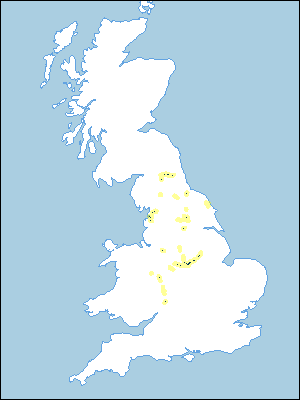 |
Note that the yellow shading represents a buffer to highlight the location of very small areas of the association.
Keys to component soil series
Midlands
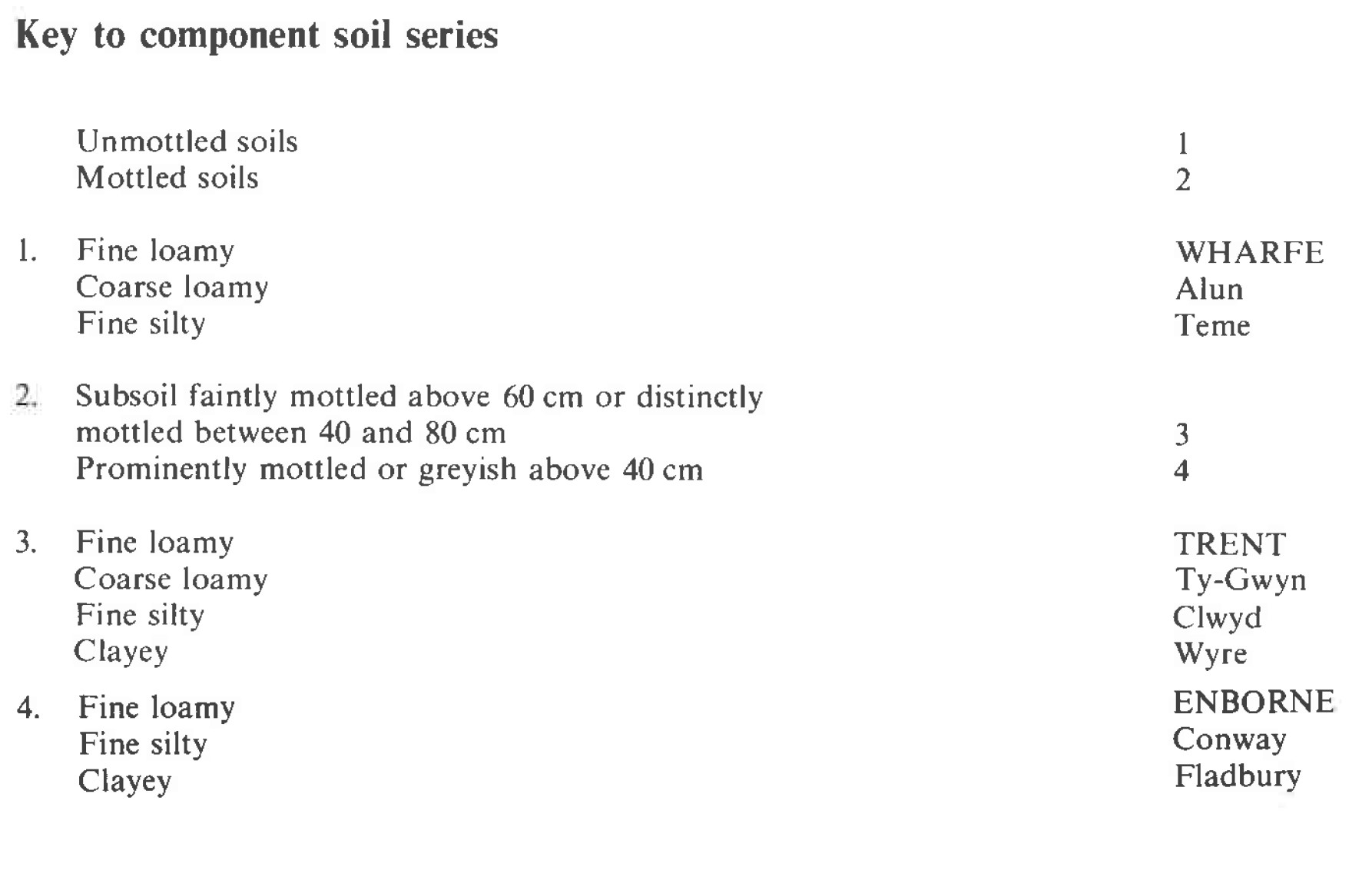 |
Northern Region
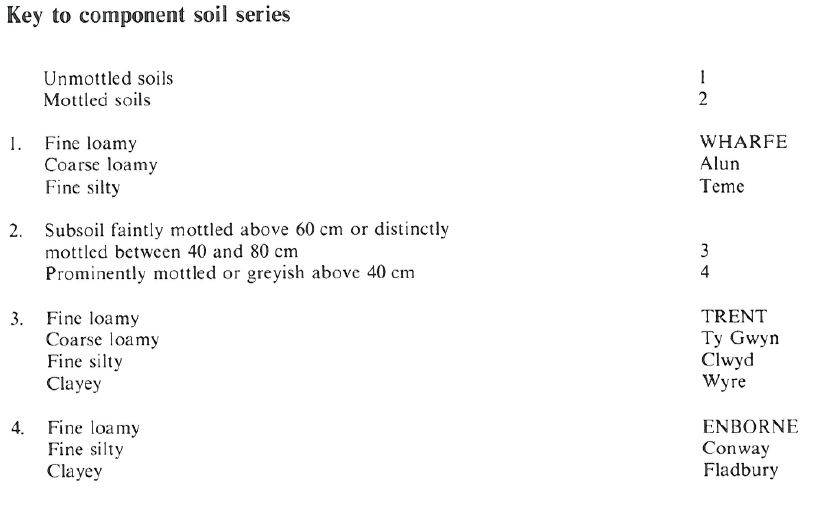 |
Typical Landscapes
Midlands
 |
Midlands
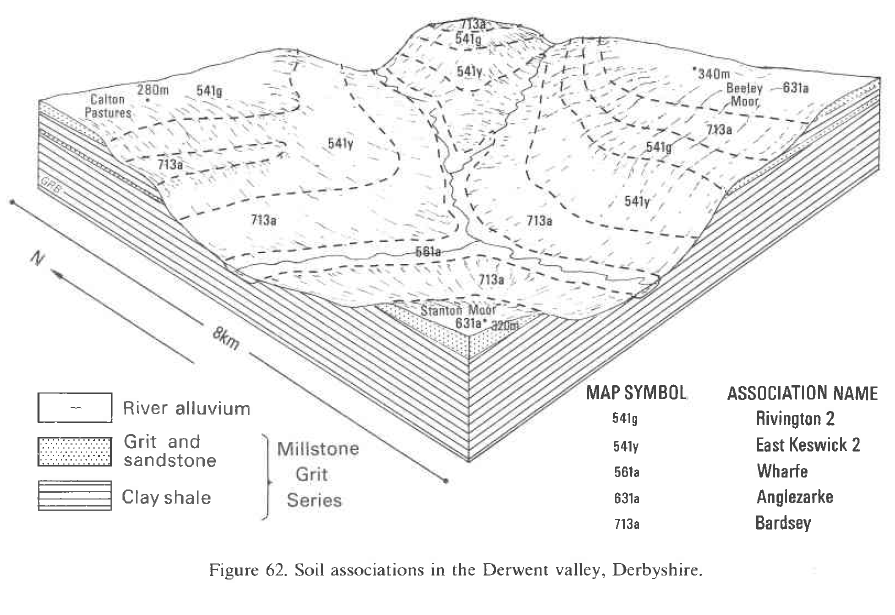 |
Midlands
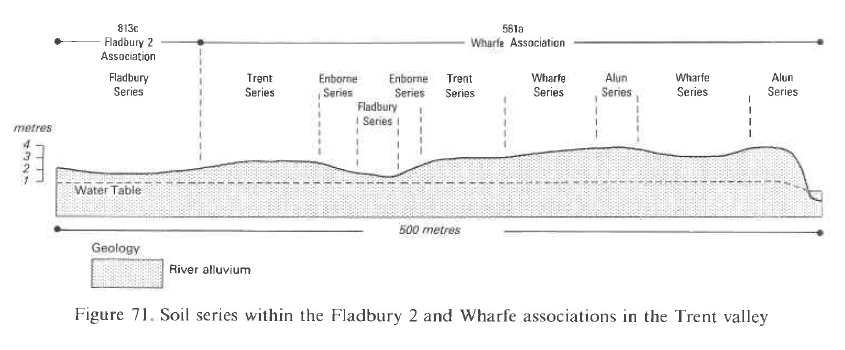 |
Midlands
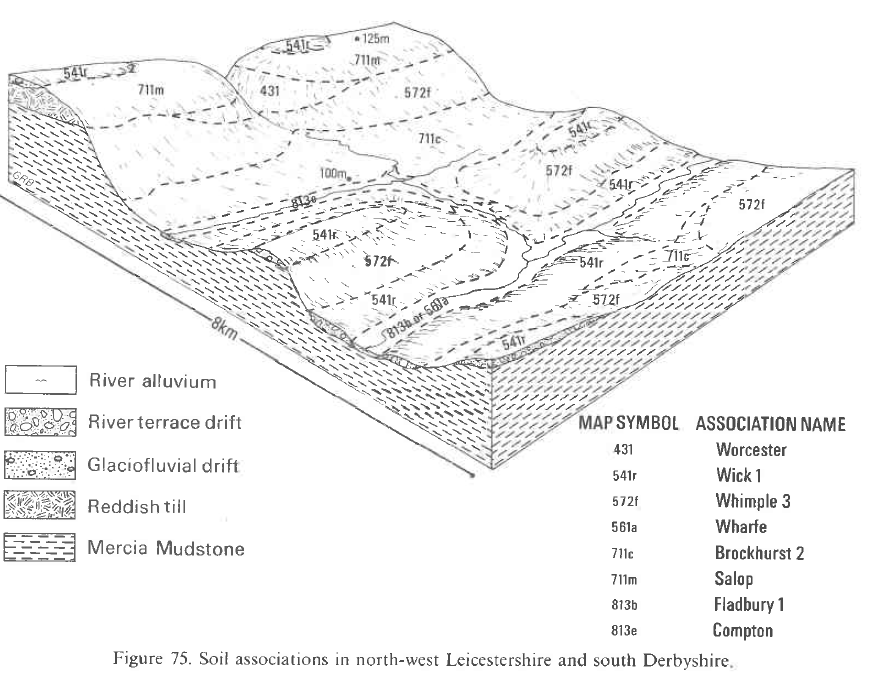 |
All information Copyright, Cranfield University © 2025
Citation: To use information from this web resource in your work, please cite this as follows:
Cranfield University 2025. The Soils Guide. Available: www.landis.org.uk. Cranfield University, UK. Last accessed 04/04/2025
